The audio version of this article was first shared in Episode 51: A Bookchat about His Delightful Lady Delia with Grace Hitchcock & a Review of The Mobster’s Daughter by Rachel Scott McDaniel.
From a legendary Christian bishop to an elf driving flying reindeer across the sky, Saint Nicholas has certainly come a long way. Today we’re taking a look at some of the stops along this wild journey to international fame.
Saint Nicholas, Bishop of Myra
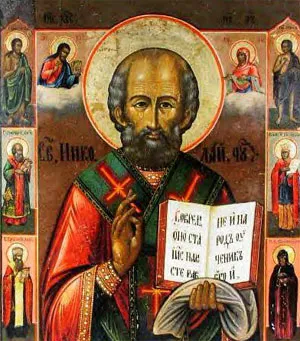
Little is known about the actual man who became the Catholic St. Nicholas. He was the bishop of Myra in what is now Turkey. At the Council of Nicaea, he famously lost his temper and slapped another bishop in the face for arguing that Christ was not equal with God. But most details about his life are fuzzy.
Legend has it that St. Nicholas was a generous man, giving all of his inheritance to the poor. One story tells of a poor man who was on the verge of selling his three daughters into slavery as he could not provide dowries for them to marry. St. Nicholas, using a window to preserve his anonymity, tossed bags of gold into the house at night. Supposedly they landed in the girls’ stockings or shoes, which were drying before the fire.
In Germany
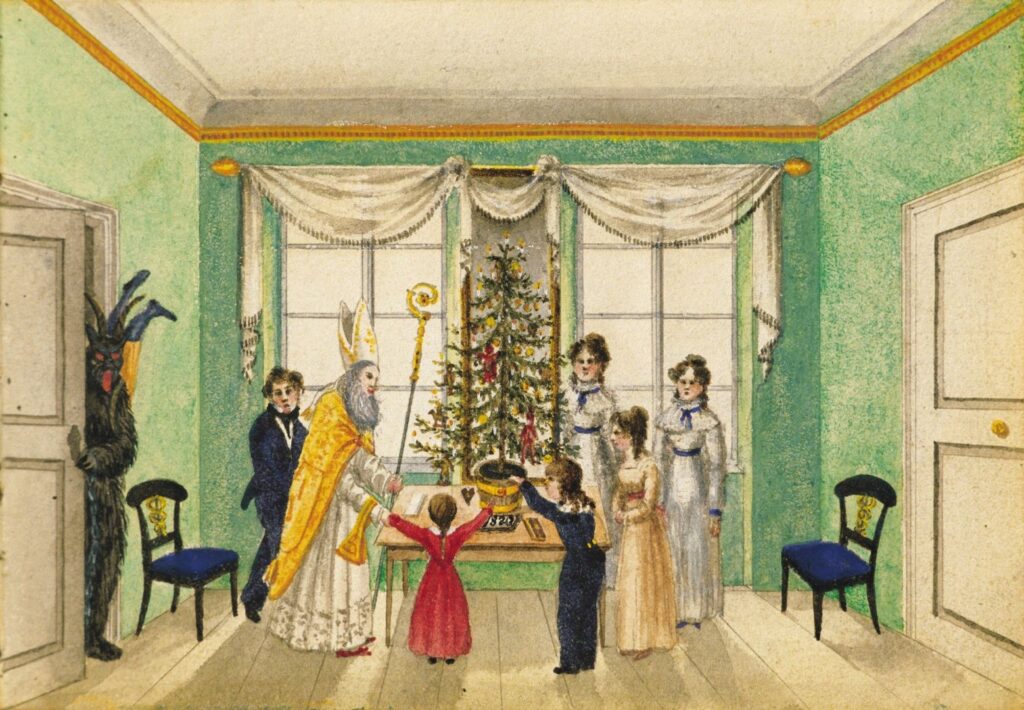
St. Nicholas Day is December sixth, the anniversary of St. Nicholas’s death, and in medieval Germany, that was the only day near Christmastime when gifts were exchanged. St. Nicholas supposedly came bringing gifts for good children, who left their shoes by the door or window the night of December 5th and woke to find them filled with goodies.
But St. Nicholas was often accompanied by a darker, monstrous creature, known by many names, one of them being the Krampas. The horned Krampas went so far as to whip naughty children with switches. In Alpine regions, the Krampas has been toned down but is still part of the traditional Christmas festivities today.
In the Netherlands
In the Netherlands, St. Nicholas was known as Sinterklaas. Impersonators dressed up in red bishop’s costumes, and small markets sprang up around St. Nicholas Day specifically to sell small toys and treats to fill children’s shoes.
During the Reformation, the celebration of Catholic saints became unpopular, and the angelic Christ-child, or das Christkindl in German, was promoted as the bringer of gifts to children. The word Christkindl eventually Anglicized into Kris Kringle.
In England
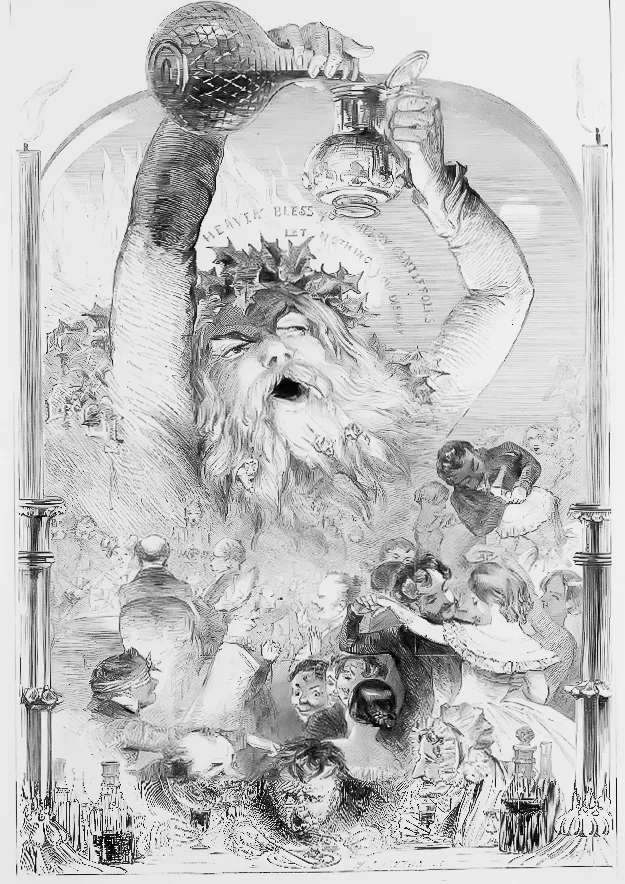
In England the character of Father Christmas dates back to the 1400’s, however he was not representative of a particular person but more an embodiment of Christmas festivities. He gave no gifts, but supposedly presided over Christmas festivities, delighting in the special food and drink and merriment. He might be known as “Lord of Christmas” or “Prince Christmas” and often condoned rowdy celebration.
Scholars say the Ghost of Christmas Present who visited Scrooge was actually a close likeness to the “Father Christmas” of the time.
In America

It was in America where the modern Santa Claus emerged. In 1809, Dutch families still told tales of St. Nicholas on December sixth. Supposedly, he flew over the city in a wagon and climbed down chimneys to deliver gifts.
In 1821, an anonymous poem entitled, “Old Santeclaus with Great Delight,” gave Santa his red coat and reindeer, and moved his visit to Christmas Eve. In 1823, Clement Clark Moore brought us the poem now known as “The Night Before Christmas,” giving Santa most of the features we know him for today.
In the 1880s, Victorian England was ready for a more family-oriented Christmas celebration, and the American Santa Claus stepped up to merge with Father Christmas into a benevolent red-coated grandfather bringing gifts for the children.
But it was during the world wars when American soldiers brought the gift-giving Santa Claus across Europe and even to Japan. Dressed in Santa costumes, they gave gifts to local children in the war-torn countries at Christmastime, forever imprinting the “jolly old elf” on the hearts of people who had never heard of him.
Perhaps the only thing that has lasted from the real St. Nicholas to the Santa Claus of today is his generosity in giving to those in need. And that, my friends, is truly at the heart of what God did on Christmas Day.
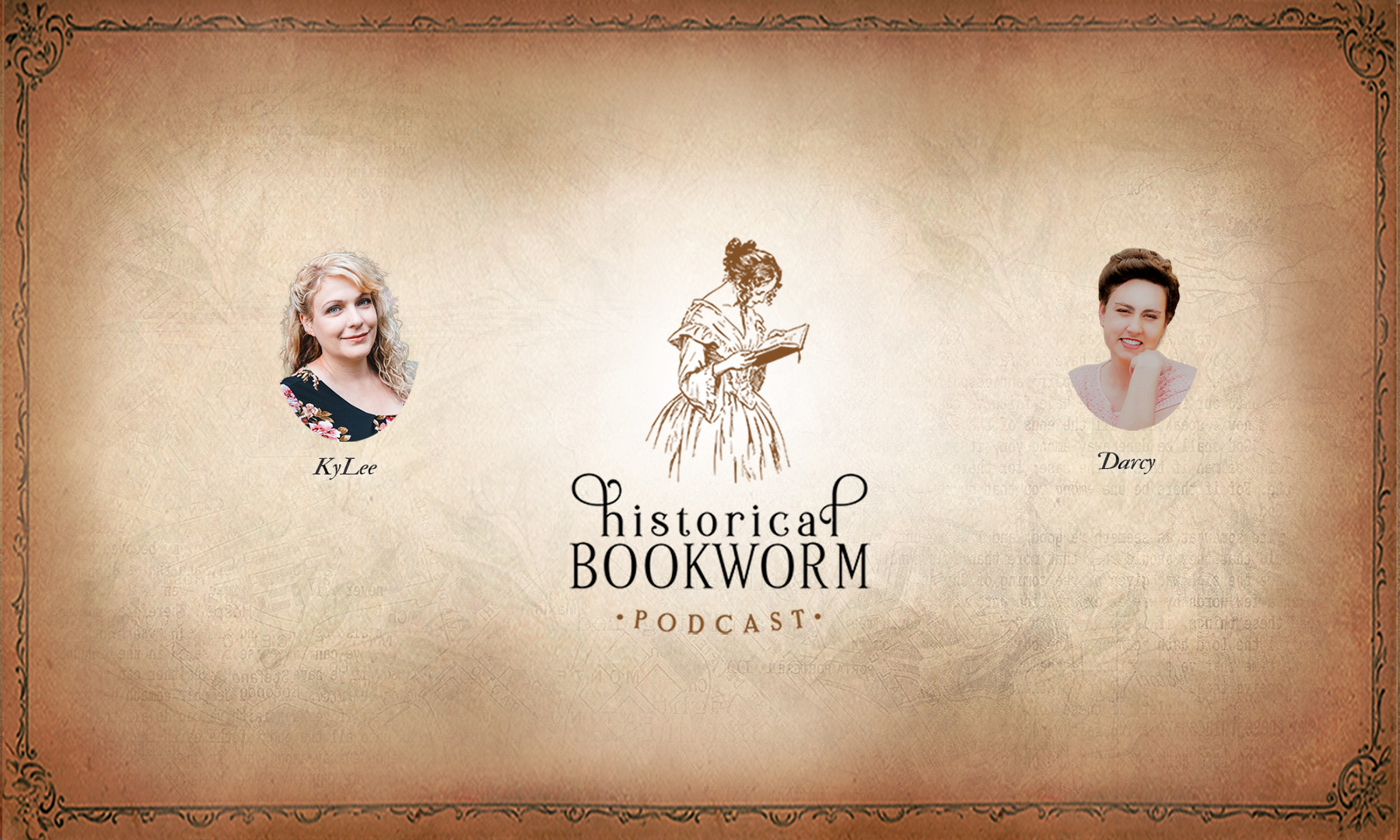
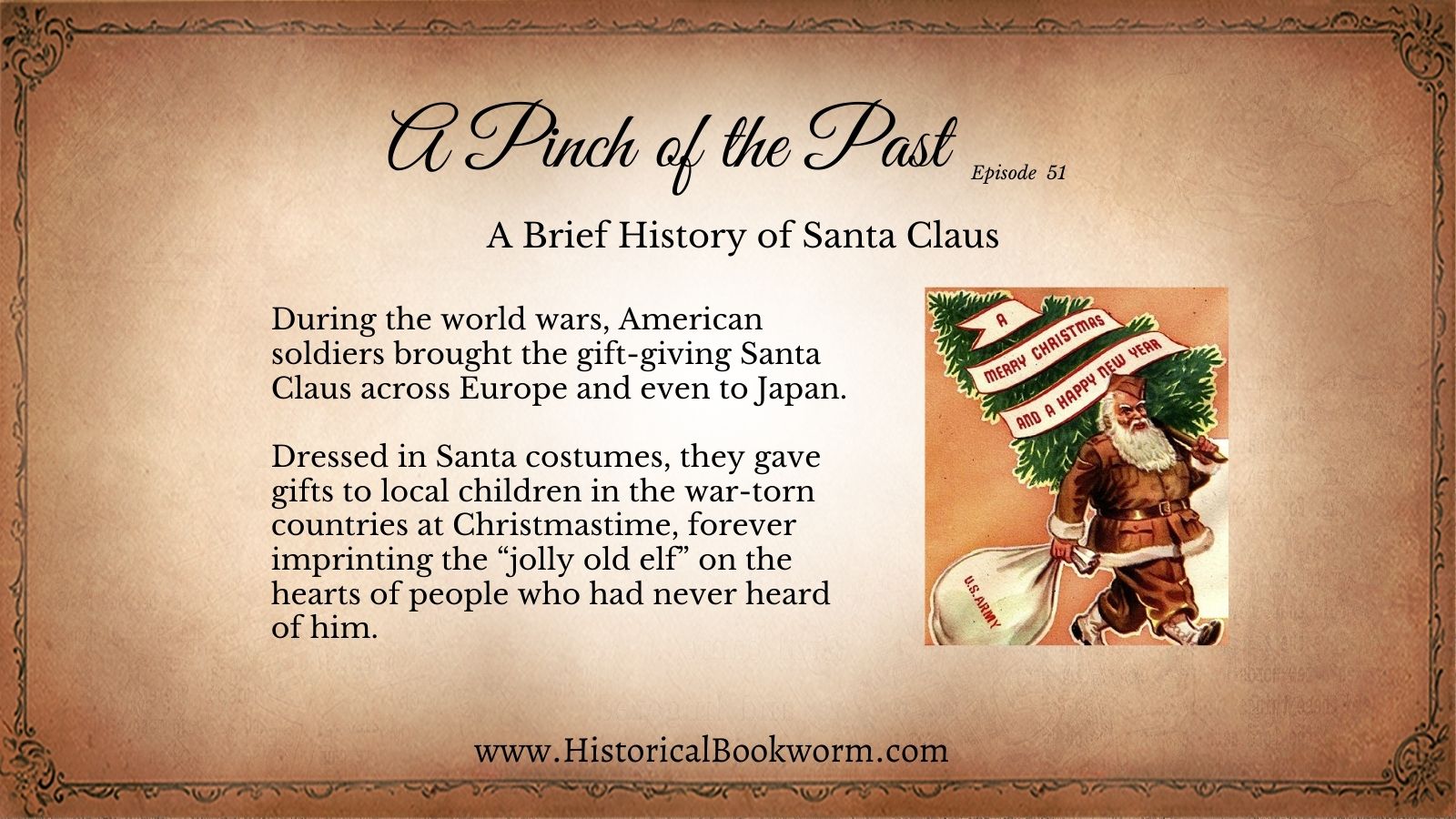
One Reply to “A Brief History of Santa Claus”
Comments are closed.